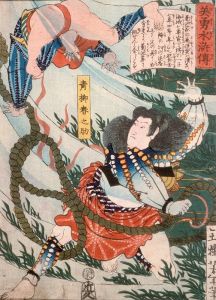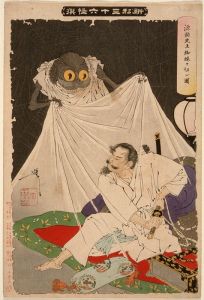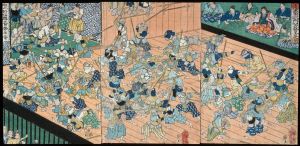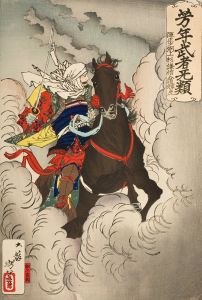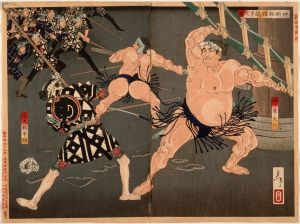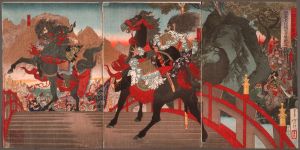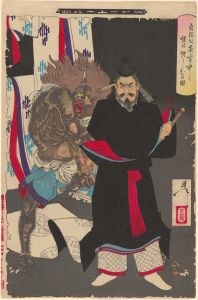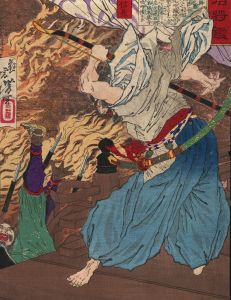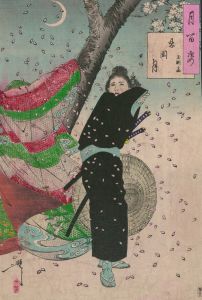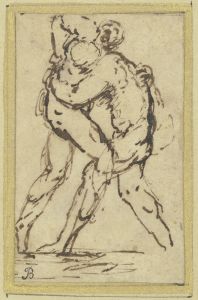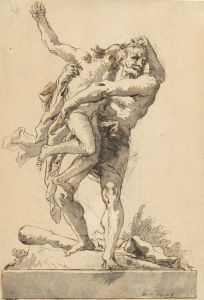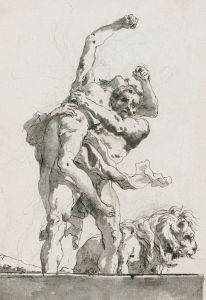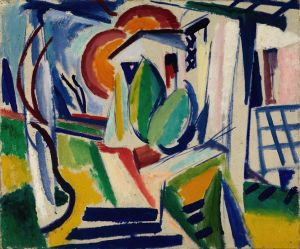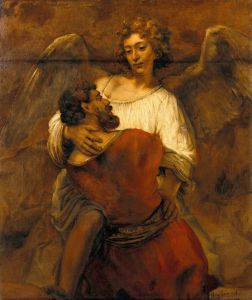
Chang Shun, the White Stripe in the Waves, Wrestling with Li K’uei, the Black Whirlwind, in the Ching Yang River
A hand-painted replica of Tsukioka Yoshitoshi’s masterpiece Chang Shun, the White Stripe in the Waves, Wrestling with Li K’uei, the Black Whirlwind, in the Ching Yang River, meticulously crafted by professional artists to capture the true essence of the original. Each piece is created with museum-quality canvas and rare mineral pigments, carefully painted by experienced artists with delicate brushstrokes and rich, layered colors to perfectly recreate the texture of the original artwork. Unlike machine-printed reproductions, this hand-painted version brings the painting to life, infused with the artist’s emotions and skill in every stroke. Whether for personal collection or home decoration, it instantly elevates the artistic atmosphere of any space.
Tsukioka Yoshitoshi (1839–1892) was a prominent Japanese artist known for his work in the ukiyo-e genre, a style of woodblock prints and paintings that flourished in Japan from the 17th through the 19th centuries. Yoshitoshi is often celebrated for his innovative approach to traditional subjects, his dynamic compositions, and his ability to convey emotion and movement in his works. One of his notable prints is "Chang Shun, the White Stripe in the Waves, Wrestling with Li K’uei, the Black Whirlwind, in the Ching Yang River."
This artwork is part of Yoshitoshi's series "One Hundred Aspects of the Moon" (Tsuki hyakushi), which was published between 1885 and 1892. The series consists of 100 woodblock prints, each depicting a scene inspired by Japanese and Chinese history, folklore, or literature, with the moon as a central or thematic element. Yoshitoshi's series is renowned for its artistic quality and the way it captures the cultural and historical essence of the stories it portrays.
The print "Chang Shun, the White Stripe in the Waves, Wrestling with Li K’uei, the Black Whirlwind, in the Ching Yang River" draws from the classic Chinese novel "Water Margin" (also known as "Outlaws of the Marsh"), attributed to Shi Nai'an. "Water Margin" is one of the Four Great Classical Novels of Chinese literature and tells the story of 108 outlaws who gather at Mount Liang to form a sizable army before they are eventually granted amnesty by the government.
In this particular print, Yoshitoshi illustrates a dramatic encounter between two characters from the novel: Chang Shun, known as the "White Stripe in the Waves," and Li K’uei, the "Black Whirlwind." Chang Shun is depicted as a skilled swimmer and fighter, while Li K’uei is known for his fierce temper and strength. The scene captures the intensity of their struggle in the Ching Yang River, showcasing Yoshitoshi's ability to convey movement and emotion through his use of line and composition.
Yoshitoshi's work is characterized by its vivid colors, intricate details, and expressive figures. In this print, the swirling water and dynamic poses of the characters create a sense of action and tension. The moon, a recurring motif in the series, adds an atmospheric quality to the scene, enhancing the drama and highlighting the cultural significance of the lunar element in Japanese art and literature.
Tsukioka Yoshitoshi's "One Hundred Aspects of the Moon" series, including this print, represents a culmination of his artistic career and a significant contribution to the ukiyo-e tradition. His ability to blend traditional themes with innovative techniques has left a lasting impact on the world of Japanese art, and his works continue to be celebrated for their beauty and historical importance.





